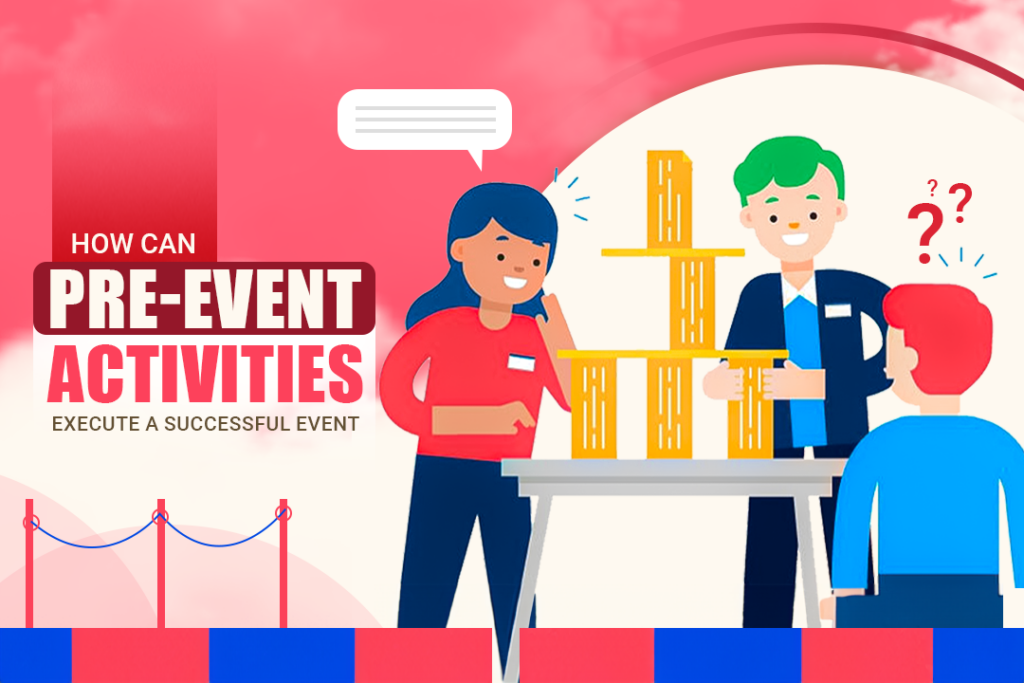
“Good fortune is what happens when opportunity meets with planning.”
Thomas Edison
Often hidden from the spotlight, ‘pre-event activities’ are considered the backbone of a memorable event. Planning ahead is crucial for a memorable event. This includes choosing the right location, finding suppliers, and perfecting the details. When an event organizer considers and meticulously plans every aspect of an event in advance, it will likely result in a successful event.
This article covers 11 important activities event planners should do before an event to make it successful. These activities will ensure that your event runs like a well-oiled machine and leave a lasting impression on everyone attending. Needless to say, these pre-event activities are the foundation of efficient event planning.
Importance of Pre-Event Activities in Event Success
It is impossible to overestimate the significance of pre-event activities in guaranteeing an event’s success. How an event turns out depends greatly on what you do before it happens. These things also decide what the event will be like. Here are some reasons why pre-event activities are essential for event success:
- First and foremost, pre-event preparations entail creating a thorough strategy for your occasion. Everything is included in this strategy, including where and what you’ll need. It helps you know exactly where you’re going and how to get there, much like a roadmap. This helps to avoid issues and any other unwelcome surprises at the occasion.
- Secondly, they assist you in preparing things in advance. You’ll have enough funds, supplies, and personnel to have essentials. It’s like preparing for a trip: you want to remember everything!
- According to Eventible, a platform with thousands of event reviews from globally recognized events, these actions help you find and fix problems before your event begins. Think of it as checking your car before a long drive to ensure it won’t break down in the middle of the road. This way, you can have a smooth event without unexpected hiccups.
- Pre-event activities are like setting the stage for a great show. It may seem trivial enough for many, and event organizers may overlook it when checking off “things to do” on their to-do list. However, the value of pre-event activities is critical to the overall success of an event. After all, you choose the best actors, create a beautiful set, and ensure the audience has a fantastic time. The goal is to make your guests happy and create a memorable event experience.
11 Creative Ideas for Pre-Event Activities
Before the event, perform the following creative activities to engage and entertain attendees. These pre-event activities will generate excitement and encourage networking and team building-
1. Icebreaker Games
Icebreaker activities are like warm-up exercises that help people interact and have fun. It is critical for all event stakeholders to develop successful collaboration and rapport by creating a welcoming environment. When everyone participates in these enjoyable, pre-event activities, it creates a great tone for the whole event.
These fun activities help people feel less nervous and create a friendly atmosphere. It makes attendees, workers, and contributors feel more open to conversation, positively influencing the event. That is why icebreaker activities or games are a great pre-event activity to help people relax and ease into the event or conference. Also, they help participants know each other’s names and basic information- all of which help create a rapport between them.
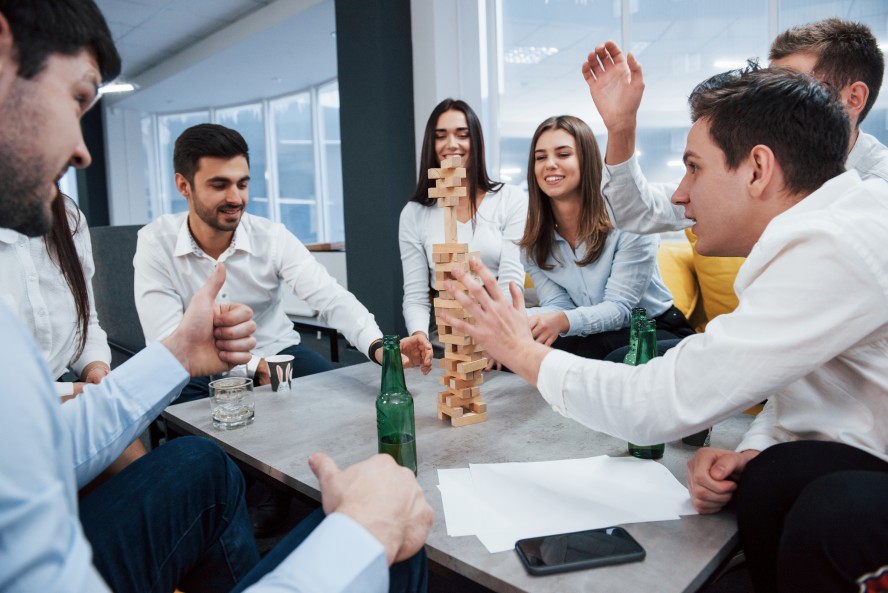
For example- “Two Truths and a Lie” is a game where you tell two true things about yourself and one that’s not true, and others try to guess which one is the fib.
“Human Bingo” is like a social scavenger hunt where you find people who match interesting characteristics on your bingo card. “Name That Tune” is all about listening to a bit of a song and guessing its name and artist.
“Speed Networking” gives you quick chats with new people, making introducing yourself and sharing information easy. “Pictionary” involves drawing and guessing words related to the event theme. “Group Trivia” is like a fun quiz to test your knowledge. “Would You Rather?” asks fun questions about choices to get to know each other. Like these, many more simple games can let your attendees have a good time and get comfortable with the crowd.
2. Virtual Scavenger Hunt
A virtual scavenger hunt is an experiential form of the traditional game ‘Treasure Hunt, ‘ in which players are expected to find specific items or solve puzzles before a specific time runs out. As part of the virtual scavenger hunt, you may be expected to find a hilarious cat video on YouTube, take a snapshot of a renowned place on Google Maps, or simply shoot a picture of something distinctive in your house.
In the end, you are expected to provide evidence through a screenshot or picture to verify that you have completed the challenge. This online game promotes cooperation, creativity, and problem-solving. Event planning thrives on collaboration, innovation, and problem-solving. A virtual scavenger hunt cultivates these abilities, which are essential in the rigorous event preparation process.
Creative thinking is an essential attribute when it comes to working as a team. It allows every member to develop unique ways to approach and solve a problem, which is crucial in working as a team. Team efficiency automatically improves when work is divided within a team and responsibly shared. For any event to succeed, team efficiency is very important.
Including icebreaking team activities such as virtual scavenger hunts, encouraging people to think creatively, and collaborating to plan and execute an event. Virtual scavenger hunts are also a terrific way to add excitement to online events. They provide a little adventure, break the ice, and get people smiling and chatting during your virtual get-togethers.
3. Themed Photo Booth
A themed photo booth is like a special picture-taking spot that’s set up with a specific theme in mind. It’s like creating your own mini-movie set but for photos! These photo booths are often found at parties, events, or even in malls.
Themed photo booths, although commonly associated with B2C events, are becoming increasingly popular in B2B events as they provide networking opportunities and foster engagement. At B2B events, these booths offer a casual yet effective way for professionals to interact. They do that by offering a unique and enjoyable way for professionals to create memorable moments that transcend the formalities of business settings.
Corporate gatherings are no longer limited to canapés and a drink of wine. Event attendees seek out immersive experiences that may serve as an icebreaker and a source of entertainment. A photo booth rental can give your visitors an engaging experience at your event. And the possibilities are endless, from aerial photo booths built over a bed to ball pits, 360-degree cameras, or literally anything else. A case study by Snapbar features examples of successful booths at in-person events. These examples show how you can leverage the booths as a part of your marketing strategy.
The cool thing about them is that they’re not just your ordinary photo spot. These themed photo booths are not just about taking pictures but about having a blast and creating memorable moments. After you’re done, you usually get printed copies of your photos as keepsakes, and some even allow you to share the pictures on social media.
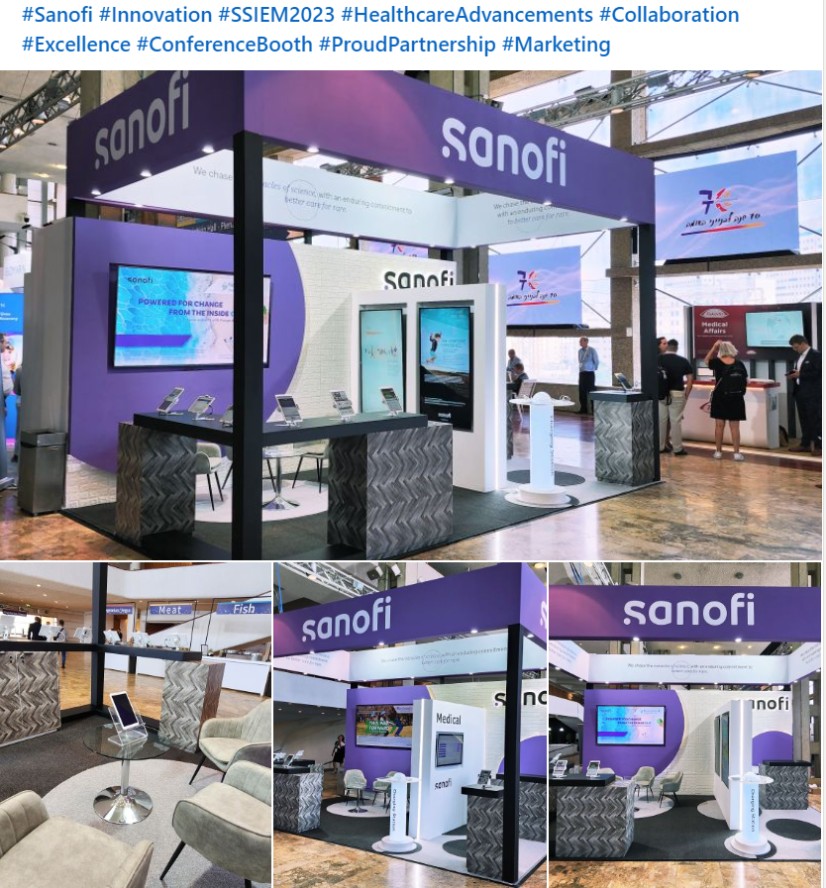
4. VIP Meet and Greet
A VIP meet and greet is like a super special event where you meet someone important or famous. VIP meet & greets have enormous significance in the world of B2B events, particularly in terms of networking and industry relationships. Attendees like these sessions because they are typically motivated by the promise of networking and learning from industry professionals. Meeting famous personalities not only provides unforgettable experiences but also generates meaningful information exchange and the creation of key connections, making these events a critical attraction for B2B professionals.
As the organizer, you can make arrangements for your attendees to meet a famous person who fits your event theme. Your attendees can chat with them, take photos together, and sometimes even exchange cards.
These events are like a dream come true for attendees. It’s a unique and exciting opportunity for your attendees to meet someone who’s an expert in your industry. VIP meet and greets create memories and make events special by connecting attendees with their inspirations.
5. Networking Mixers
Networking mixers are events that help people connect, interact, and build relationships. Event organizers plan these gatherings. The importance of these mixers has also been discussed in a journal called Business Horizons. The 2022 study titled- Six Principles for the Design of Better Networking Events states how merely organizing a mixer isn’t enough without maintaining its effectiveness. These sessions are like friendly gatherings where attendees of your event network and socialize.
Think of them as casual, relaxed events designed to foster meaningful connections. These mixers, like conferences, workshops, or conventions, can be part of your event. As an organizer, your main goal is to offer a place to talk, share stories, and meet new people. To set the mood, consider offering light refreshments and drinks to make it more inviting. For more ideas, you can also check out our article – 29 Dynamic Networking Event Ideas to Make a Lasting Impression. This will definitely guide you on ways to create a perfect networking mixer.
Networking mixers are important events where people can meet others with similar interests. They can find potential partners or make new connections that will help them professionally. To learn more about successful event partnerships, check out our article on 21 tips for Building Successful Event Partnerships.

6. Charity Fundraising Challenges
Charity fundraising challenges are an effective technique for event organizers to instill social responsibility and community participation in their events. These challenges require participants to complete a series of tasks or activities to raise donations for a non-profit cause. For example, your attendees will walk a certain number of miles, complete a series of fitness challenges, or even commit to a digital detox for a defined length of time, all while seeking sponsorship or donations. After that, the money raised can be donated to a preferred charity or cause.
Charity fundraising challenges at corporate events engage attendees and provide a platform to support Corporate Social Responsibility (CSR) initiatives. Businesses can actively contribute to social issues by transferring revenue earned from these issues to causes such as helping local charities, educational programs, or environmental sustainability efforts.
o3e – a leading Charity team-building company in the UK and Europe, has successfully implemented this initiative at The Amazon Web Services summit, CISCO Live Events, etc. Their overall vision is to help attendees connect, engage, and bring change together while participating in activities for their community.
These tasks also give your event a significant, engaging component and a great social impact. They create a culture of giving and community by making members feel connected and purposeful. Using them can boost event attendance because people enjoy doing fun and new things while supporting charities.
7. Customized Event Merchandise and Swag Bags
Customized event products and swag bags are excellent methods for event organizers to improve the entire experience and make an impression on attendees. These things are custom-made for your event and feature your branding, theme, or logo. They are often given to attendees as souvenirs or as part of the event experience.
Customized stuff can range from T-shirts, pens, and mugs to more specialized items such as phone accessories, tote bags, or even custom-made collectibles. These objects serve as reminders of the event, helping participants cherish their experience.
Swag bags, however, are a carefully chosen collection of these one-of-a-kind objects that are frequently distributed to participants upon registration or as part of VIP packages. They offer participants useful information about the event in addition to a feeling of exclusivity and excitement. These bags also help attendees remember your brand every time they see it or use an item from it. You should check out our article on 35 Best Conference Swag Ideas To Impress Your Event Attendees for curating your next memorable swag bag.
These personalized components are more than simple tokens; they also promote community building, strengthen event branding, and act as conversation starters for guests. They frequently wind up on social media through user-generated content (UGC). For example- your attendees will click a picture of these bags and share it on their social media platforms with your event hashtag. The primary effect of UGC is that it influences a lot of real crowds, which means more visibility for your event. For more understanding of the digital space of event marketing, check out our The Ultimate Guide to Understanding Event Marketing on Social Media.
More often than not, this activity fosters a feeling of appreciation and community among attendees, adding even more significance and memories to your event.
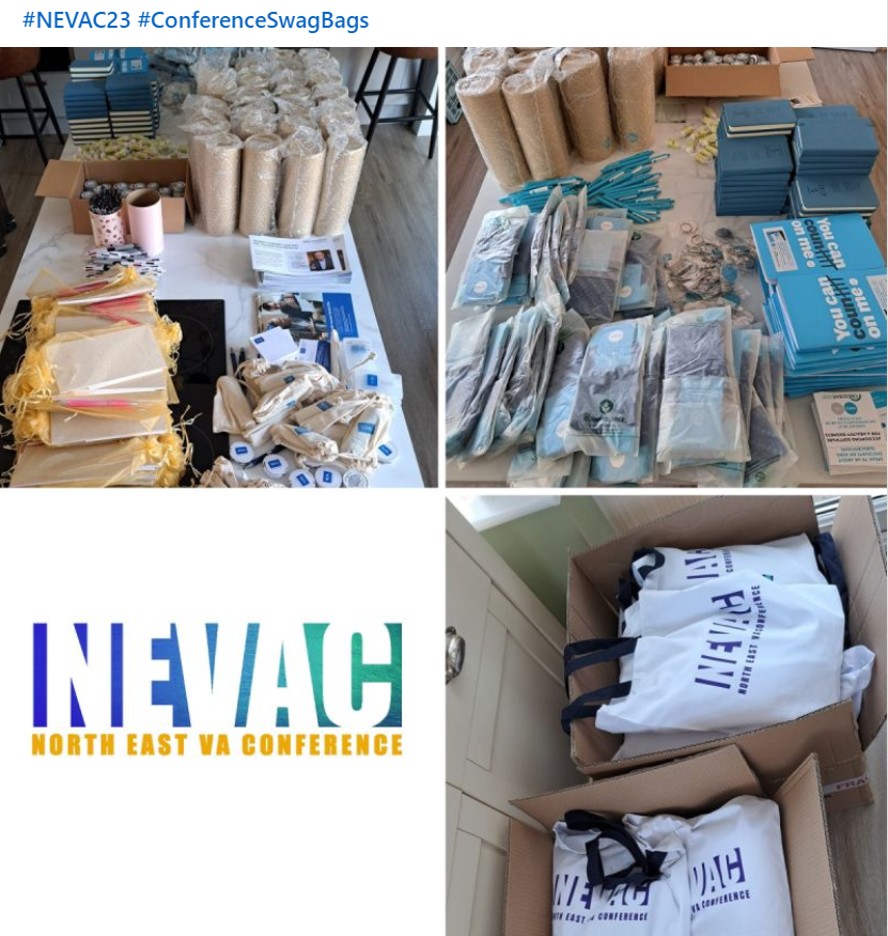
8. Guided City Tours
As an event organizer, incorporating guided city tours into your agenda can be a fantastic way to add a local touch to your event. These tours allow participants to explore and experience the city where the event is held. They provide insights into the local culture, history, and attractions, making the event more engaging and memorable.
For attendees flying from other locations to be part of guided city tours, event organizers can typically schedule these tours before or after the main event. You can set specific time slots outside the core event agenda. In this way, participants can join the city tours at their convenience. As an organizer, you can provide various time options, allowing attendees flexibility to choose a suitable slot according to their travel itinerary.
You may customize these tours to match your event’s theme or your participants’ interests. Guided city tours provide variety and personalization, whether it’s a historical trip, a gourmet experience, or a cultural discovery. They also encourage interaction among participants and enable the impact of lasting memories.
9. Live Entertainment Showcases
Live entertainment showcases are a dynamic and engaging element to consider for your event. These showcases contain live acts such as music, dancing, comedy, or other types of entertainment. They can take place during your event to entertain and engage guests.

The presentations create a lively atmosphere and leave an impression on the audience. You can customize them to match your event’s theme or goals, adding excitement and entertainment that engages your audience.
Live entertainment displays not only keep guests amused and energized, but they also provide a platform for talent exposure. These showcases are great for featuring local acts, new artists, or well-known talents, which adds to the event’s special appeal. Moreover, a conference’s live entertainment showcases serve as engaging informal networking events, giving a comfortable venue for guests to mingle outside of the official conference setting. These showcases provide an excellent setting for attendees to communicate, exchange experiences, and establish relationships while enjoying the entertainment. This makes networking more memorable and fun.
10. Pop-up Mini Exhibitions
As an event organizer, consider including pop-up mini-exhibitions as part of your event experience. These mini-exhibitions are like brief, specialized displays that can add a unique dimension to your event. They’re versatile and can be tailored to complement your event’s theme or purpose.
Pop-up exhibitions can showcase various forms of content, whether it’s art, technology, or industry-related displays. They offer a quick and focused snapshot of a particular topic, providing attendees with insights and engagement opportunities.
The benefits are multifaceted-
- Pop-up exhibitions are ideal platforms for innovation because they can introduce new products, technologies, or concepts.
- They can also create interactive learning experiences, allowing attendees to explore and engage with the subject matter.
Ultimately, they are a great form of event marketing and enrich the overall event experience. To understand more about event marketing, you can also check out our comprehensive guide to B2B event marketing. Incorporating a few ideas from there will definitely increase your event’s visibility.
11. Role-playing Workshops
Organizing role-playing workshops for a B2B event involves creating simulated scenarios that mirror real-life business situations. It’s crucial as it provides a hands-on learning experience where attendees can actively participate in resolving industry-specific challenges.
For an event organizer, structuring these workshops entails setting up scenarios relevant to the attendees’ business challenges, facilitating discussions, and encouraging participation. Participants engage in problem-solving, negotiation, and decision-making, gaining practical insights they can apply professionally.
The significance stems from its direct application to real-world business problems. These workshops allow participants to explore other points of view, stimulate new thinking, and learn from one another’s experiences, making them a vital component of a B2B event. The participatory aspect of these seminars enables participants to network, collaborate, and share best practices, and impart practical information.
Navigating Challenges during Pre-Event Activities
Just like a captain prepares a ship, event planners must navigate pre-event planning cautiously to spot potential problems. These obstacles can take many different shapes, and knowing how to overcome them is crucial to ensuring a successful outcome. Now, let’s discuss some of these problems and ways to overcome them-
1. Budget Management
Problem- Managing limited funds and making spending choices.
Solution- Pay careful attention to what you spend. If finances are tight, sort things according to importance and look for discounts. Seek out businesses that can assist with expenses.
Let’s say you are preparing a community fundraising event to benefit a local organization. Still, as you go deeper into the details, you find your budget is more limited than you had anticipated. This budget constraint makes planning the essential spending decisions for a successful event difficult. To manage this, look for services that are sponsored or at a reduced price and give priority to expenses that are absolutely necessary, such as venue and permit fees.
For example, negotiate discounted pricing with a local food provider or work with a printing company that offers promotional materials in return for event exposure. This strategy guarantees appropriate expenditure, allowing an impactful event to occur within financial limitations.
2. Vendor Troubles
Problem- Dealing with uncooperative or unreliable vendors.
Solution- Discuss your expectations with the individuals or businesses you hired. Have backup plans if they cannot fulfill their end of the deal. Say you are planning a business conference, and the AV equipment supplier starts to show signs of inaction and doesn’t follow through on their promise as the event date approaches. This poses a huge risk to the event’s success, as they were responsible for important audiovisual aspects.
In this scenario, honestly discuss your concerns with the vendor, emphasizing the event’s significance. Create backup measures, such as finding alternative equipment suppliers or renting AV equipment, to limit risks in the event of vendor failure. This proactive communication and preparation for alternatives prevents possible disruptions, assuring the event’s success even when suppliers are uncooperative.
3. Time Management
Problem- Staying on schedule and adjusting as needed.
Solution- Establish a timetable and follow it. Assign tasks to your team and maintain productivity using tools. If necessary, be prepared to adjust the schedule. For example, you organized a charity gala event. During the setup, delays occur due to unforeseen venue restrictions. These interruptions threaten the scheduled event start, causing potential disruptions.
Adhering to a well-structured timetable is fundamental in this scenario. Create a precise timetable, assign responsibilities to your team utilizing productivity tools, and be ready to alter plans as needed. Ensure you include buffer time in the schedule to account for unanticipated issues such as delivery delays. This preemptive planning will ensure a flawless event, even if unforeseen obstacles arise.
4. Tech Problems
Problem- Handling technical glitches or equipment failures.
Solution- Before the event, test all of your technical equipment. Have backup gear and tech support available in case something goes wrong. For example, let’s say you’re organizing a product launch event for a tech company. The presentation system experienced a major glitch during the final rehearsal, disrupting the entire demonstration. This technical failure jeopardizes the event’s success, affecting the product unveiling. In this situation, meticulous preparation is key.
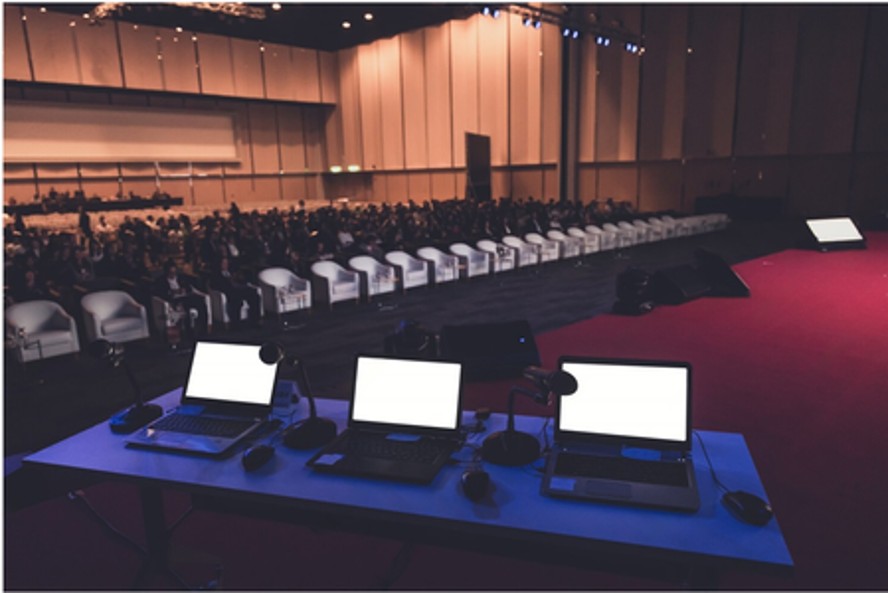
Perform rigorous testing on all technical equipment before the event. Maintain backup equipment, such as spare projectors or laptops, and keep tech support on standby. This proactive testing and backup resource method prepare for probable faults, providing a quick resolution to technical difficulties and a successful event despite unforeseen equipment failures.
5. Rules and Changes
Problem- Adapting to rule changes or unexpected circumstances.
Solution—Be prepared for unforeseen events or changes in regulations. Be adaptable; have a Plan B if the event needs to be altered. As an organizer, you need to be the most flexible with anything.
For instance, you were planning a cultural exhibition. The difficulty is that the allowed event capacity is suddenly changed by government rules. To handle such changes, be ready for the unexpected and maintain your flexibility. Create a backup plan to deal with the new limits, such as scheduling online displays or sporadic in-person viewings. Being adaptable is essential for event planners because it enables them to make last-minute alterations.
6. Problems with Logistics
Problem- Ensuring smooth delivery and setup of event essentials.
Solution- Verify that delivery and setups are proceeding according to schedule. To ensure a seamless event, check with vendors, inspect the venue, and address any problems beforehand.
For instance, you were preparing for a product launch as an event organizer. The supply of display supplies is suddenly delayed, jeopardizing the setup timetable. To avoid such logistical concerns, verify and cross-reference the delivery timetables supplied by vendors. Conduct pre-event venue inspections to anticipate and handle any potential setup concerns. Even in the face of unforeseen logistical difficulties, you can guarantee an uninterrupted setup and a successful product launch by verifying schedules and anticipating delays.
It is your responsibility as the organizer to keep your morals high at all times. Everyone you’re going to hire and meet will pick up your energy and contribute accordingly to the event. So be prepared for some challenges and be a ‘man with a plan.’
Strategies to Ensure Pre-Event Success
To plan and execute a successful event, you need a strategic approach. The pre-event stage is where you lay the groundwork for this success. A Ph.D. graduate from the University of West London published a paper in 2014 titled– Event Experiences: Design, Management, and Impact. This paper reflects on the various phases of ‘unextraordinary experiences’ by attendees during different events happening across London, United Kingdom. It concludes that ‘pre-event’ activities result in increased engagement.
These essential pre-event actions can differentiate between a delightful and unpleasant event experience. Here are some vital strategies to think about in the lead-up to your event to ensure its success:
1. Set Clear Goals
Begin your event planning by establishing clear and well-defined objectives. Think of this step as targeting a destination—you need to know where you’re heading before you can plan your journey. Precise goals serve as the foundation for a successful event. In the process of setting clear goals, consider incorporating a SWOT analysis.
SWOT (Strengths, Weaknesses, Opportunities, Threats) is a strategic tool that provides insights by evaluating these four key elements. Incorporating a SWOT analysis in the event planning process provides valuable insights for setting well-informed and realistic goals. It guides decision-making throughout event preparation.
2. Make a Detailed Plan
Imagine planning a big party. To host an event, you must plan the venue, refreshments, guest list, and activities. Creating a detailed plan for your event is like making a checklist for your party, but way more complex.
This plan includes a well-structured timeline covering tasks, deadlines, and milestones. It addresses venue arrangements, marketing strategies, speaker and entertainment schedules, registration processes, health and safety measures, sponsorship agreements, and on-site management. You can stay organized and ensure you don’t forget anything.
3. Manage Your Money
Just like you have a budget for your personal spending, you must budget for your event. You don’t want to run out of money before you’re done, right? To make event planning easier, create budgets for each aspect, like venue rental, supplies, and assistance.
4. Choose Reliable Partners
These people or companies help with different parts of your event. They include the place you’re renting, the caterer, and who can guarantee a good experience. Choose dependable people who will arrive on time and perform their duties effectively.
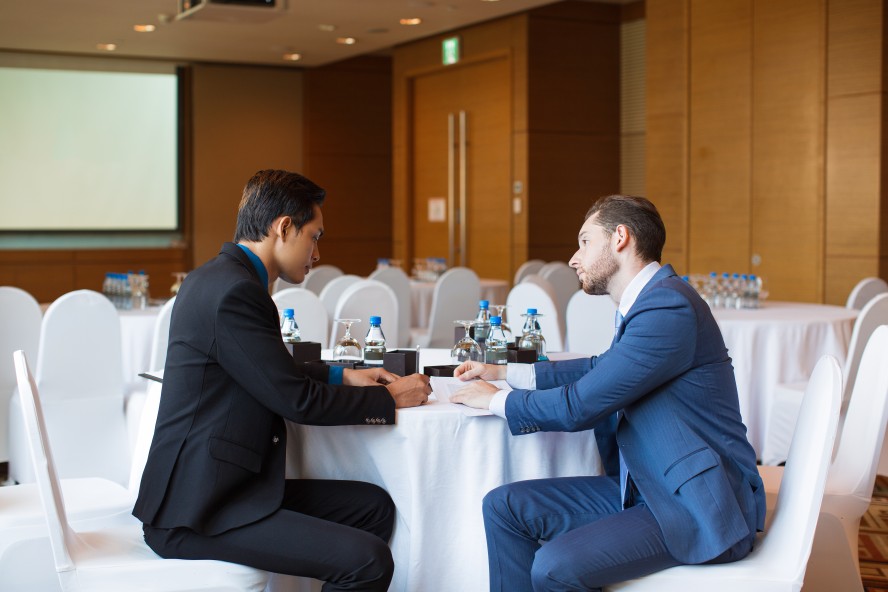
5. Tell Everyone About Your Event
Your event is no fun if no one knows about it! As an event organizer, spreading the word about your event is just as important as planning it. Think of marketing as your way of sending out invitations to the grand party you’re organizing. To ensure your event succeeds, you must effectively reach your target audience.
To create awareness and generate excitement, utilize various marketing tools, such as posters, social media, email campaigns, and more. These tools serve as your invitation cards, sharing key details like the event date, time, location, and what attendees can expect. It’s about creating a buzz, building anticipation, and ensuring your event doesn’t go unnoticed.
6. Plan for Surprises
Just like a weather forecast can change at times, things can go wrong with your event. You need to have backup plans for when they do. Be ready for anything and stay flexible. Contingency plans prepare you for unexpected challenges, and post-event activities, like feedback collection and attendee follow-up, complete the plan.
This detailed event plan is your recipe for a seamless and successful event. It provides the organization and structure needed to ensure a memorable experience for all involved.
Key Takeaway
Pre-event activities are the building blocks of a successful and memorable gathering in the world of event planning. From engaging icebreaker games to enlightening webinars, these activities are the keys to unlocking a vibrant and interactive event experience.
Pre-event activities are not mere warm-ups but strategic tools that set the stage for a remarkable event. Before the main event starts, they help attendees connect, build excitement, and create a community. Additionally, these events offer chances to learn, connect, and have fun, ensuring participants are fully involved and excited. After preparing your roadmap to these activities, check out our ultimate guide to successful event promotion.
You can use these activities to increase attendance and create excitement. They leave a lasting impact and introduce what lies ahead, leaving attendees well-prepared and eager to dive into the main event. For more of the latest information about the event’s industry, visit our site- Eventible.




Comments are closed.